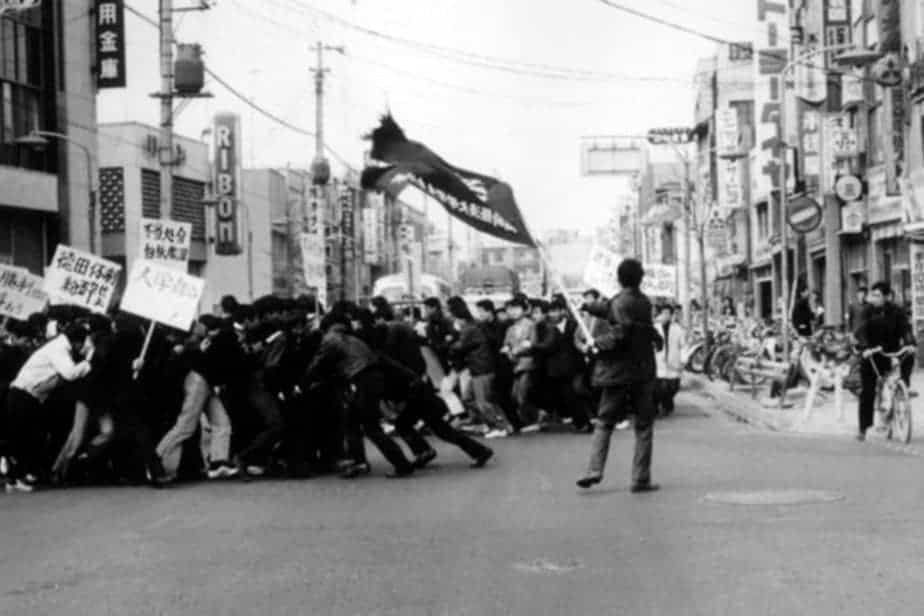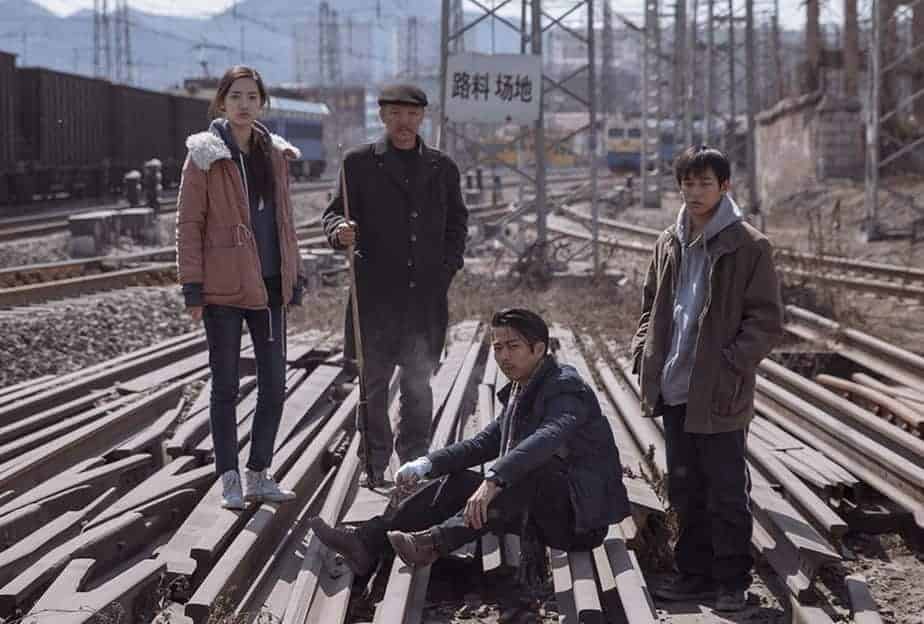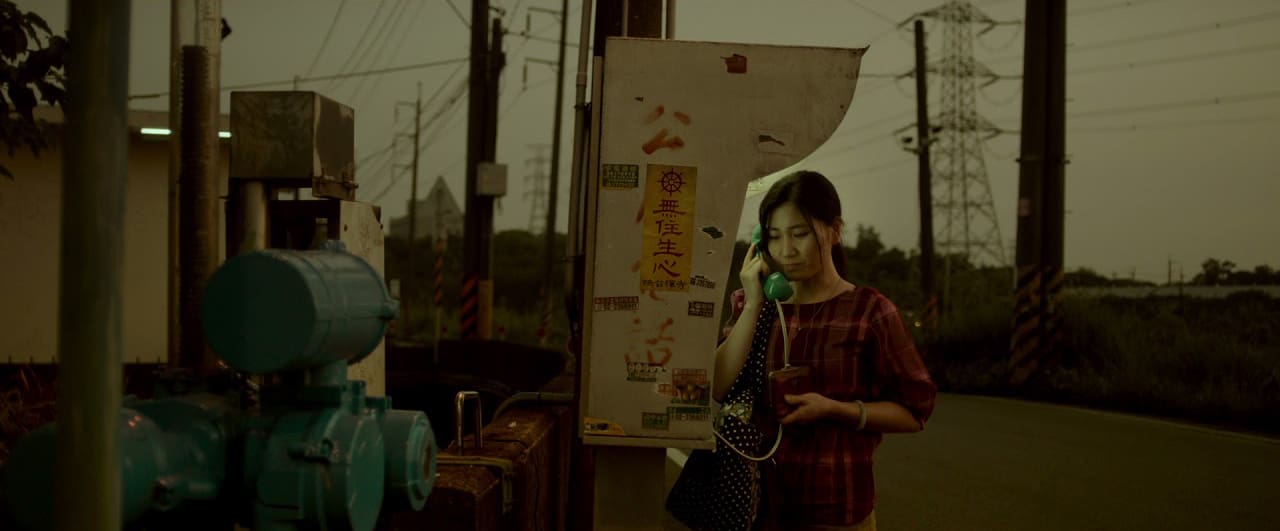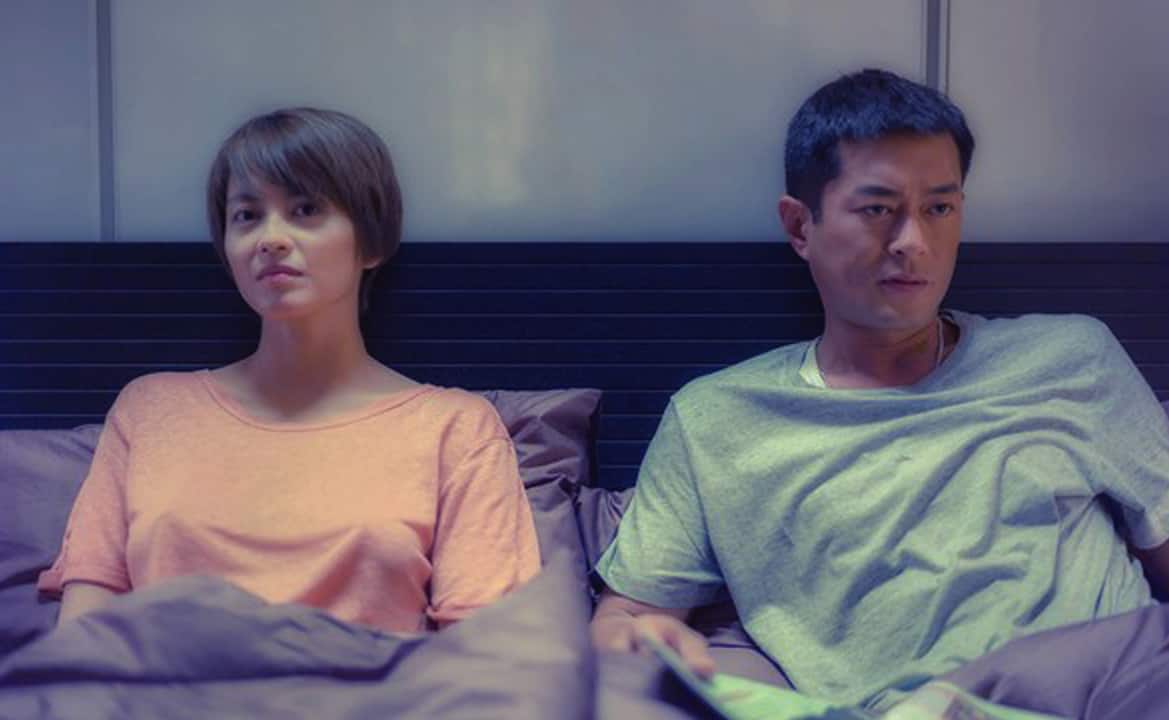In 1967, Shinsuke Ogawa closes himself in with a group of university students, who occupy the lecture hall of Takasaki University. Over a time span of one year, he documents their struggle for freedom of speech and their protest against a society that becomes more and more oppressive.
Forest of Oppression is screening at the Japanese Avant-Garde and Experimental Film Festival

Rooting from the US-Japan Security Treaty renewal, in 1960, the Japanese student protest reached its peak in 1967 and 1968. The anger erupted in massive widespread demonstrations across the country, the occupation of many universities and was accompanied by violent union strikes.
The leftist student groups gathered themselves in an organization called „Zengakuren“. Founded in 1948, and still existing in several factions to this present day, Zengakuren dreams of a self-administrated society.
Shinsuke Ogawa takes one piece of this movement and extracts many aspects of their demands. The small group of Takasaki University students, who got expelled because of their views, see the university as it is, as a place of contradiction. Because of the faculty‘s missing freedom of speech, it produces rebel minds. As a place of freedom, the university should be more be open to everybody and should be used by everybody at any time to express their ideas. But this freedom is not granted to the students but instead misused by the university.
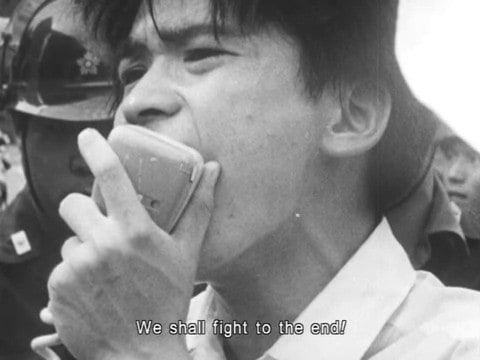
The filmmaker allies with the group. He gets admission to their meetings and is allowed to go through the build-up barricades into the student hall. This results in very deep insights into the ideology that is driving the young men. Although the camera material seems very amateurish from time to time, it is one of the rare sources that cover the student movement from the inside.
Most of the film consists of interviews with the students. Ogawa is breaking the cinematic illusion by editing photo stills over their voices. Pictures of newspaper articles, demonstrations and close up potraits. In addition, many sequences are described by an omnipotent off-narrator. The style of the movie is therefore very unconventional, even more at its release. Ogawa managed to distribute „Forrest of Oppression“ via Jieiso, which is an independent collective of directors, who had the goal to show the protest to as many people as possible.

The collective is also the main focus of his documentary. The camera keeps always a distance, gives an overview of the situation. For example, showing large crowds of people chanting in front of a courtroom. The individual steps back behind the larger group. In the end, it comes down to a war of ideologies: Marxism versus Capitalism.
But Ogawa also mentions the financial aspect of the protest. One of the protesting students says in an interview, that one needs financial independence to fully elaborate his or her political ideology. The documentary captures an important thought here and sparks some self-reflective perspectives on how to act against the existing system.
„Forest of Oppression“ ends with a black screen and white written letters. The text puts the microcosmos of the Takasaki University protest in a larger image. Only then, does the viewer realize the whole outcome and dimension of the movement. The text is describing the follow-up events of the Takasaki protest in other cities like Tokyo and reports about the bloody conflict at the Narita Airport and also about the peace movement opposing the Vietnam War. Giving the actions of the small student group a bigger dimension, Ogawa manages to surprise the viewer and motivates to question current forms of social coexistence.


